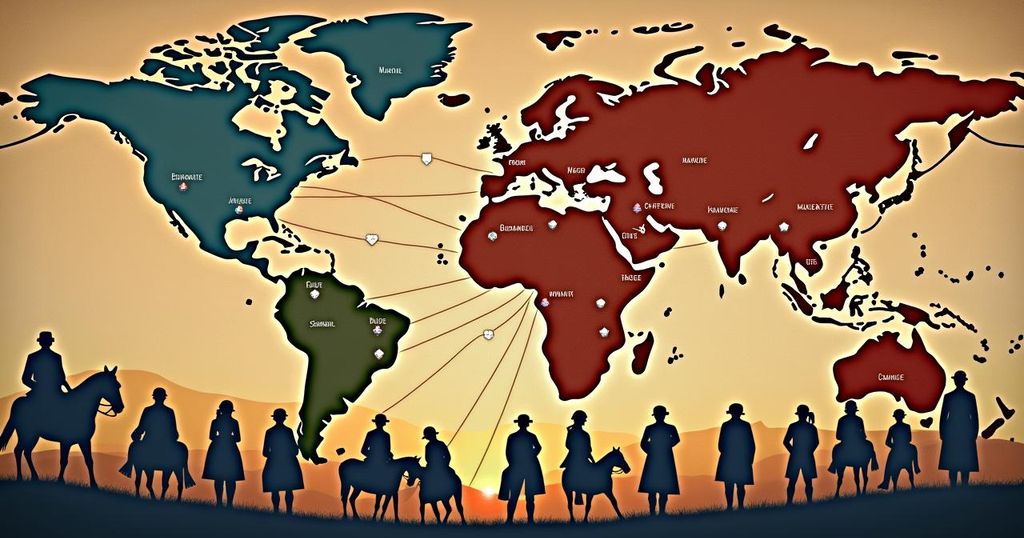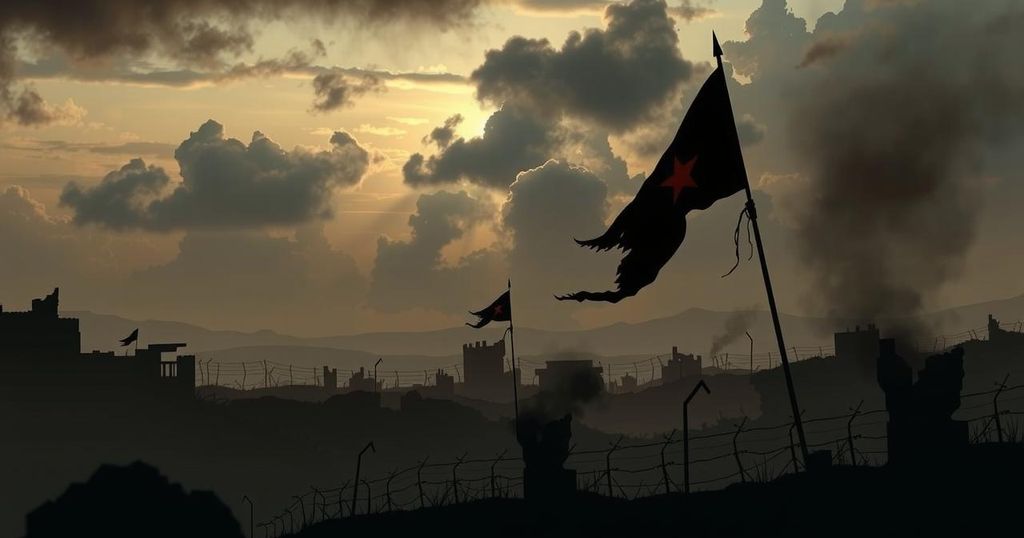Understanding Alliances and Territory in Alex Garland’s Civil War
Civil War, directed by Alex Garland, depicts a fractured America divided into four factions, focusing on four reporters amidst the conflict. The story illustrates the emergence of unexpected alliances, particularly between California, Texas, and Florida, opposing a tyrannical president. The film highlights themes of humanity in the face of war, while leaving the futures of the Loyalist States murky after the Western Forces’ victory.
The recently released film, Civil War, directed by Alex Garland, provides a haunting snapshot of a fractured America divided into four major factions, primarily focusing on the experiences of four reporters traversing through this tumultuous landscape. Rather than deeply exploring the origins of this speculative conflict, the narrative emphasizes the stark humanity and inhumanity exhibited by both sides, reflecting on themes of war and human nature while distancing itself from modern political divides. The film’s central setting remains primarily within the Loyalist States, with minimal exploration of the other factions. Among these factions, the Western Forces, comprised of California and Texas—two large states that have exited the Union—emerge as vital allies despite their divergent political ideologies. Under the leadership of a fascist president played by Nick Offerman, these states unify in opposition to the Loyalist government, illustrating how shared adversities can foster unexpected alliances. Additionally, the New People’s Army Alliance encompasses numerous northern states, although their presence is understated throughout the film. Their hints of involvement suggest a collective resistance against a common threat. Meanwhile, the Florida Alliance, which includes several southern states, presents a significant and immediate threat to the Loyalist States due to their geographical proximity. As the narrative unfolds, it becomes evident that the chaotic landscape of the United States is mirrored by the struggles within the remaining Loyalist territories, where economic instability and governmental oppression reign. The film concludes with the Western Forces’ triumph, leading one to ponder the fate of the Loyalist States that may emerge in a post-war reconstruction era. In summary, Civil War not only showcases a dystopian narrative of a fractured nation, but it also provokes thought on the resilience of alliances formed in the face of tyranny, urging viewers to reflect upon the dark possibilities of a divided America.
The article discusses the fictional universe created by the film Civil War, directed by Alex Garland. The film portrays a future where the United States is fragmented into various factions due to a civil war, exploring themes of humanity amidst conflict. It particularly focuses on the social ramifications and political dynamics among the divergent forces, primarily highlighting the interactions of the reporters who serve as the audience’s eyes into this chaotic world. The alliances formed between California, Texas, and Florida against the Loyalist States illustrate unexpected collaborations born out of desperation, adding depth to the overarching narrative of rebellion against tyranny.
In conclusion, Civil War invites audiences to engage with a complex narrative that highlights both the horrors of conflict and the potential for unity against oppressive regimes. By showcasing the varied alliances formed in the face of adversity, the film underscores the importance of solidarity among different factions striving for a shared vision of freedom and justice amid turmoil. As such, the film serves as both a critique of authoritarianism and a reflection on the enduring nature of human resilience.
Original Source: screenrant.com








Post Comment